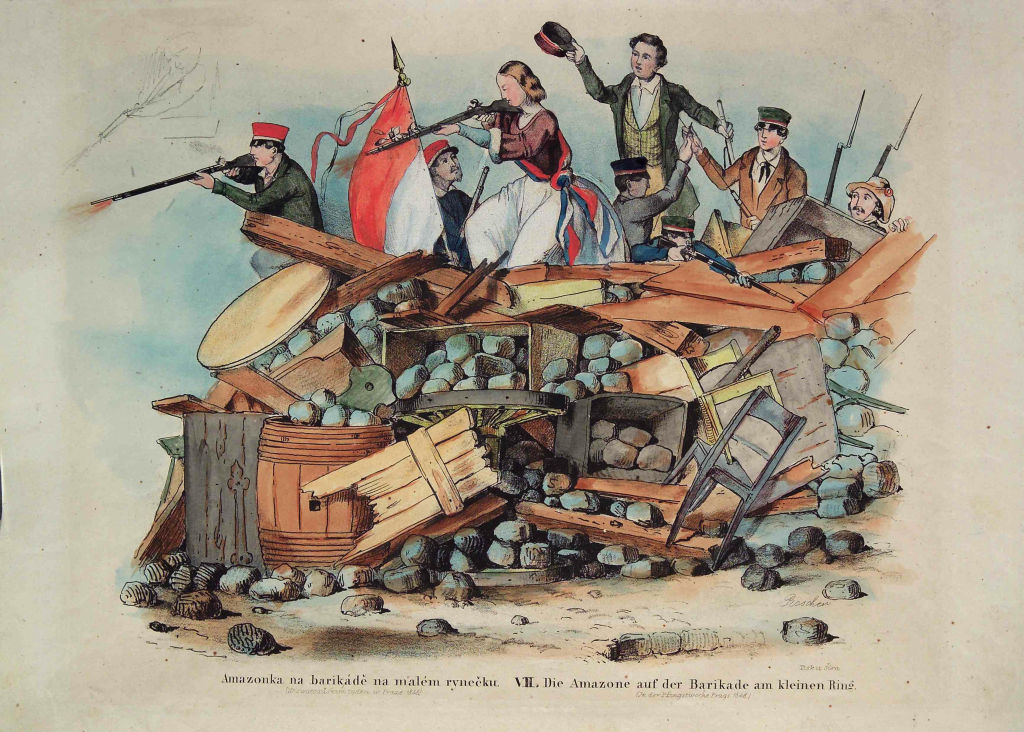Don’t sleep on America’s Bad Dream Team.
Blue America Needs Red America

A reply to Chris Caldwell.
In a recent essay in The New Republic, Chris Caldwell predicts the coming crackup of the Blue coalition. Since I argued something very similar in my recent book, The Stakes, I naturally agree with the thrust of his thesis.
Except, I think, with the conclusion. Caldwell notes in the last paragraph that
in the 1860s, three major Western countries—Germany, Italy, and the United States—each fought similar wars of national unification, in which the more dynamic part of the country subjugated the more bucolic (or backward) part. In our time, Democrats are the party of relatively greater technological and demographic dynamism, Republicans the party of relatively less. This is not the same type of relationship as the one that obtained until half a century ago, when Republicans were (roughly speaking) the party of capital, and Democrats the party of labor. Capital and labor need each other in a way that dynamism and tradition do not. One fears the present conflict will differ accordingly.
The point about the three great examples of the advanced part of a nation subjugating the backward part is insightful and chilling. I do believe that is what Blue America intends for Red.
But Caldwell further says that dynamism does not need tradition in the same way that labor needs capital and vice versa. I suppose the qualification “in the same way” makes that statement true, but Caldwell’s implication seems to be that they don’t need each other at all. Is that really true?
I doubt it, for a number of reasons. In our specific context, “dynamism” is not what it was in the 1860s, when “dynamism” was quite materially, physically productive. Contemporary “dynamism” is productive on paper but not in the physical world. Blue elites have bet their entire project, and all their status and wealth, on the proposition that this distinction doesn’t matter. No, even more: they’re entirely convinced that “knowledge” productivity is inherently superior to physical productivity. But what if that bet doesn’t pay off? What if physical productivity is inherently more valuable economically, socially and politically, more conducive to civic life? What if virtual productivity depends decisively on its physical counterpart?
To what extent, also, is our paper productivity simply fake? I’m no expert on high finance, but our whole economy seems to me to be jury-rigged, smoke-and-mirrors—dependent as it is on debt, fiat currency, etc.
The Blue Economy
Mass financialization seriously drives the Blue economy. This seems to be based on a few factors, all of which are inherently unstable. The first is a reliance on monetary policy, which is mostly chicanery—zero interest rates for more than a decade now?—and which depends on the dollar’s status as a reserve currency, on the willingness of foreigners to lend us money, and on our ability not necessarily to pay them back (we almost certainly can’t, and even more certainly won’t) but to meet the interest payments.
All of these are interconnected and will go on until they don’t, or can’t. But they seem to have much less staying power than the massive economic expansion from roughly the middle of the 19th century to the middle of the 20th, which was driven by concrete innovation and delivered real gains in standards of living for all classes.
A related but hardly irrelevant point: financialization seems to amount in large part to creating new “products” and markets at the high end, which enrich elites based on…what? Rents excreted out of government monetary policy, outsourcing, immigration, globalization, etc.—all of which make the middle and the heartland poorer. In particular, financialization means finding new ways to stoke consumerism from people who can’t really afford “stuff” like they (or their parents) used to and so must pay for with debt, which obviously benefits banks, in two ways. They make money on the front end through “market-making” and financing the global expansion of big business, and on the back end by lending (and charging usurious interest rates and late fees) to consumers. This is, of course, parasitic.
The other major pillar of the Blue economy is Big Tech, the actual rewards accruing to which appear to be wildly out of proportion to the benefits conferred. When you think back to what the Industrial Revolution accomplished in the transportation sector and manufacturing alone, all of it was vastly more “concrete” than what tech is doing. And the earlier expansions’ benefits were far more transformative and widespread. 1900 looked far less like 1860 than 2020 looks like 1980. Tech is powerful today because of how it can throttle information flows, but information flows are as old as writing. Tech is an effective instrument of tyranny but it does not yet provide benefits for most people that aren’t merely frivolous or enstupefying. Which is in itself a problem for the “dynamic” coalition.
The last element of the Blue economy is media, broadly understood, which either doesn’t make money but is subsidized by Tech or Techies, or does make money but only through its tight alliance with Big Tech, to which it is an appendage. Media (to be more specific, propaganda) is the pillar of the Blue regime, in the sense that it is in effect its army and police force. But as such, it is fundamentally a cost center, not a profit generator.
Perhaps most important, those most emblematic of Blue America, and of the Blue economy—coders, app developers, financiers, VCs, senior managers, foundation grant-makers, professors, vice chancellors for diversity, bloggers, Vox editors, sous chefs, hairstylists, interior decorators, handbag designers, etc.—do not constitute a majority, or even close, of Blue America. They are in fact a minority—and a small minority.
The Blue coalition is something like a layer cake in which the only visible part is the frosting. But underneath that veneer is a light, airy, spongy, not very filling mass that constitutes (spit-balling here) something like 80% of the cake. It doesn’t contribute much to Blue America’s self-congratulatory wealth or “dynamism.” It is, like Blue America’s propaganda arm, a cost center—only much, much more costly. The one thing it contributes is votes. But those votes, even when obtained lawfully, are very expensive. It is at the very least an open question how long “productive” “dynamic” America can generate enough wealth to fund the accustomed lifestyle of the frosting and enough to cover the subsistence of the crumbs sufficiently to keep them turning out to vote the “correct” way.
Blue Subjugation
All of this suggests that the “dynamic” Blue part of the country needs the “backward” Red part a lot more than Caldwell estimates, for a few fundamental reasons. One, the latter are consumers of the stuff the Blues are selling: pixels, bytes, and debt. Second, to the extent that anything gets made any more in this country (other than, perhaps, motherboards), Red people make them. Third, they grow all or most of the food. Fourth, they do the lion’s share of so-called “dirty jobs” or grunt work. Granted, they aren’t hotel maids in Blue cities. But all kinds of other things get done by them and only by them—both Red people in Blue areas and Red people in Red areas, whose work product gets transported into Blue areas also by Red people.
More fundamentally, “dynamism” is inherently parasitic on stability, which is to say virtue. Yes, I know Red America with its opioid crisis, obesity epidemic, welfare usage, etc., is not as virtuous as it used to be. And in some ways—high divorce and illegitimacy rates—it’s in worse shape than the Blue upper and upper-middle classes. But it is also more religious, patriotic and tradition-minded. These traits provide some measure of continuity to a society that is otherwise continually in the process of upheaval owing to the “dynamic” half of the country. What happens when that brake on dynamism is gone, or becomes so weak that it can no longer slow down the car?
Dynamic America has a few ways to address this problem. It can subjugate, as Caldwell says, Boring America. Or it can try to import or develop a Boring class of its own that it can boss around within the confines of Blue America. But the latter solution presumably will, sooner or later, lead to the same problem. “Blue helots” will still be helots. Eventually they will see themselves as such and develop similar interests and political impulses. At which point they will have to be subjugated, too.
Subjugation—whether of a Red class within Blue borders or of Reds where they live now—carries the same risks. One is a reaction that breaks the system and ends the subjugation. That end could take the form of a new settlement that keeps the whole together, perhaps via a kind of radical federalism and regionalism. Or it might lead to a formal separation. Or it might simply end the United States altogether, to be replaced by God-only-knows-what. Barring overt rebellion, the other likely outcome is a kind of implicit general strike in which the Reds’ output and contributions decline.
Aren’t we already seeing at least nascent signs of both? Isn’t the Deplorable support for Trump a sign of rebellion, while the opioid crisis, etc., are signs of apathy and despair?
No one—at least not I—can say which reaction will prevail. But it seems to me that one eventually must if Blue subjugation continues. Which it surely will. The Blues have all the power now, with precious few exceptions, and I see no sign of moderation or circumspection in any of them whatsoever.
Blues sense, at a deep if subconscious level, their need for Reds. Much of their talk about the superiority of their society, economy, and way of life is cant. They may not want to think about where their grubby necessities come from, but they know it’s not from themselves and hence intuit that it must come from somewhere—and someone.
Then there is the unpleasant fact that Blue America wants to rule Red in a way that the latter does not want to rule Blue. To borrow from Machiavelli, in the present-day United States, these two diverse humors are found, which arises from this: that the Blues desire to command and oppress the Reds, while the Reds wish to be neither commanded nor oppressed. Machiavelli offers two solutions to this perennial, inherently irreconcilable conflict. To a prince (sitting or would-be), he recommends becoming the leader-vindicator of the backward or bucolic or less dynamic side and sticking it to the dynamos. To the founder of a republic, he urges the creation of institutions through which both sides harness their mutual enmity to team up and wring the good life out of foreigners.
The problem with the latter solution Machiavelli partly illuminates in another passage where he describes Ferdinand and Isabella’s expulsion of the Jews from Spain as an act of “pious cruelty,” that is, cruelty allegedly in the service of God. Pious cruelty is perhaps the animating impulse of the average Blue’s outlook and behavior toward the average Red: the spirit of the Grand Inquisitor, who, as he flogs you for heresy, really believes he is saving your soul. This, too, is not a recipe for long-term stability. Even—especially—if the Blues win.
In sum, my contention is that dynamism needs tradition more than the reverse, and that tradition may not need dynamism at all—if it’s willing to live a little poorer and with slow or no WiFi.
I leave to the reader to decide for himself whether this short missive has ended on a hopeful note or gives cause for alarm.
The American Mind presents a range of perspectives. Views are writers’ own and do not necessarily represent those of The Claremont Institute.
The American Mind is a publication of the Claremont Institute, a non-profit 501(c)(3) organization, dedicated to restoring the principles of the American Founding to their rightful, preeminent authority in our national life. Interested in supporting our work? Gifts to the Claremont Institute are tax-deductible.
America’s blindness to the source of our decline is the fundamental problem we face.
Donald Tusk’s coalition government represents the authoritarian face of the new “anti-authoritarian” movement.
On civil war in America and other unpleasant possibilities.
The passing of an American bard.
A specter is haunting the West.






